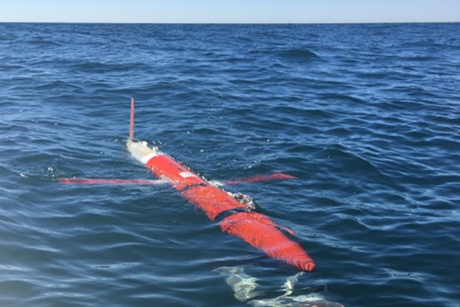The Zooglider is an autonomous vehicle developed at the Scripps Institution of Oceanography with support them the Gordon and Betty Moore Foundation. It is equipped with a low power optical imaging system, dual frequency sonars (200/1000 kHz), plus standard oceanographic sensors. It is able to resolve mesozooplankton within a well-defined sample volume, at a vertical scale of 5 cm, while making concurrent physical and acoustic measurements.

The Zooglider uses its variable buoyancy to an sink to a depth of up to 400 meters before resurfacing again. As it sinks, it used the hydrodynamics of its foils to provide forward propulsion, much like a glider in air. When it surfaces, it sends location information to the lab via satellite, and receives instructions in return. It can stay out to sea for a number of weeks and is then recovered and the data downloaded from its sensors.